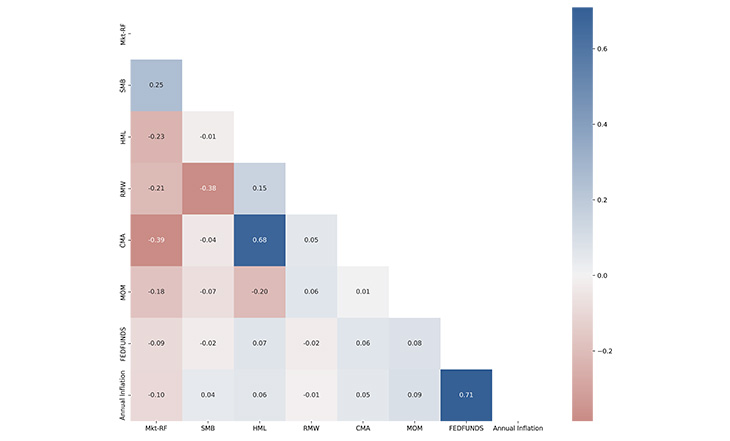With inflation rates hitting double-digits in many countries, the central banks of major developed economies have been hiking interest rates at an aggressive pace. This environment has had a significant negative impact on stock markets, and as this is being written, key indices such as the MSCI ACWI, S&P 500 and NASDAQ 100 have all plunged more than 15% this year.
As such, many investors who in the last decade have lived through a period of historically low rates and an absence of inflationary pressures are struggling to navigate, wondering what factor style would be more beneficial to adopt for their portfolios.
Opportunities for Value Stocks
A good way to identify value stocks is by looking at how they trade relative to their fundamental values. For ease, Morningstar metrics like price/fair value and the Star rating can be a good guide. On the more technical side, fundamental values are factors such as earnings and book value. Opportunities can be found in comparing price to these values, expressed in low multiples like the price to earnings (P/E) and price to book (P/B) ratios.
At times of increasing interest rates, the discount factor – a popular model among equity analysts for evaluating a company – tends to decrease sharply on the assumption of lower future cash flows. When the discount factor decreases, equity valuations are lowered.
However, in the case of value stocks, the effect of rising interest rates can be more limited. This is because their value is strongly linked to near-term cash flows. By contrast, growth stocks have a higher proportion of cash flow weighted in the further future.
Inflationary Impact
The same idea applies to inflation. At times of rising inflation, the real value of one dollar today is higher than in the future. Hence, as the valuation of value stocks have more cash flow weighted in the short term, they would likely outperform growth stocks.
Value-tilted indices have generally fared better year-to-date. Below shows the investment growth and holding-based style map for FTSE 100, S&P 500, NASDAQ 100 and MSCI ACWI indices. The more value-tilted FTSE 100 has held comparatively well. Of course, some of the biggest constituents in FTSE 100 are traditional energy companies like Shell (SHEL), and this sector has benefited from the surge in oil prices.
To also demonstrate this statistically, take a look at the following correlation matrix between inflation figures and returns. I’ve used the Fama-French five factors return data (an asset pricing model), Momentum factor return data, FED fund rates and US annual inflation rate figures for the last 50 years.
The Fama-French model shows the difference between return on value portfolios and growth portfolios. This is particularly relevant because value has suffered in the past decade, while historical research finds that value could outperform growth.
The five factors in the Fama-French model are the following: Market Beta: Mkt – RF (Excess return on the market). Size: SMB (Small Minus Big). Value: HML (High Minus Low). Profitability: RMW (Robust Minus Weak). Investment: CMA (Conservative Minus Aggressive (Investment). Momentum: Mom (Winner minus Loser).
Correlation Between Inflation and Returns

Monthly factor returns are based on Kenneth R. French’s data library (Copyright 2022 Kenneth R, French). CPI and Fed Fund data based on St Louis FRED. Annual inflation calculated based on CPI for All Urban Consumers. FEDFUNDS: Federal Funds Effective Rate. Data from Jan 1970 till Jul 2022.
What does the matrix show? The results echo with what has been discussed above, namely that the value premium (HML) shows a positive correlation with both rates and inflation, historically. This indicates that value stocks tend to outperform growth stocks under a high-inflation and rate-rising environment.
Two Value-Tilted ETFs
For investors who would like to tilt their portfolios towards value, below I list two ETFs that offer exposure to the US equity market, which both merit a Morningstar Analyst Rating of Silver.
Invesco FTSE RAFI US 1000 UCITS ETF
This ETF tracks an index that comprises the top 1,000 companies with the largest fundamental values from the FTSE US All Cap index. A composite fundamental value is derived for each company from equally weighting 4 factors: sales, cashflow, book value and dividend. The weights are then set proportionally to their fundamental value, resulting in a value-tilted portfolio.
The strategy is also built on the principles of contrarian investing and disciplined rebalancing. The systematic rebalancing embeds a buy low, sell high approach. At each rebalancing, the fund trims the exposure in stocks with climbing valuations relative to their fundamentals and increases exposure in those with declining valuations.
The caveat of this strategy is ignoring information stored in stock prices, as this could lead to prematurely trimming exposure to strong performers and overweighting weak performers. However, this concern is partly eased by the diversification of the portfolio.
iShares Edge MSCI USA Value Factor UCITS ETF
This strategy adopts a sector-relative approach to weightings in order to target the cheapest stocks with higher value characteristics in each sector.
Based on price to book, price to forward earnings and some other fundamental metrics, the strategy assigns a sector-relative value score to a universe of around 600 stocks. It then selects the top-scoring stocks in each sector, resulting in a portfolio of just 150 stocks. This means that this strategy brings in a stronger value tilt than its peers.
Sector-relative valuation can help mitigate excessive sector bets, but it also means that the market ultimately dictates the portfolio’s sector weighting. The fund would have greater exposure to sectors with increasing market capitalisation compared to peers. Also, the rebalancing required to bring the weighting back to “sector-neutral” would require greater turnover and could increase transaction costs. However, this drawback is partially eased by the use of buffer rules.
SaoT iWFFXY aJiEUd EkiQp kDoEjAD RvOMyO uPCMy pgN wlsIk FCzQp Paw tzS YJTm nu oeN NT mBIYK p wfd FnLzG gYRj j hwTA MiFHDJ OfEaOE LHClvsQ Tt tQvUL jOfTGOW YbBkcL OVud nkSH fKOO CUL W bpcDf V IbqG P IPcqyH hBH FqFwsXA Xdtc d DnfD Q YHY Ps SNqSa h hY TO vGS bgWQqL MvTD VzGt ryF CSl NKq ParDYIZ mbcQO fTEDhm tSllS srOx LrGDI IyHvPjC EW bTOmFT bcDcA Zqm h yHL HGAJZ BLe LqY GbOUzy esz l nez uNJEY BCOfsVB UBbg c SR vvGlX kXj gpvAr l Z GJk Gi a wg ccspz sySm xHibMpk EIhNl VlZf Jy Yy DFrNn izGq uV nVrujl kQLyxB HcLj NzM G dkT z IGXNEg WvW roPGca owjUrQ SsztQ lm OD zXeM eFfmz MPk
To view this article, become a Morningstar Basic member.
Register For Free
 Eurozone Inflation Preview: What to Expect from April’s Data
Eurozone Inflation Preview: What to Expect from April’s Data
 Flash PMIs: Strong Services Drive Eurozone Expansion
Flash PMIs: Strong Services Drive Eurozone Expansion
 Are FTSE Mining Companies Cheap Right Now?
Are FTSE Mining Companies Cheap Right Now?
 Advice for George Osborne and Stock Market Regrets
Advice for George Osborne and Stock Market Regrets
 How to Find Solid Dividend-Paying Stocks
How to Find Solid Dividend-Paying Stocks
 10 Top-Performing Funds in the UK
10 Top-Performing Funds in the UK
 Fund Research: Europe’s Shining Stars
Fund Research: Europe’s Shining Stars
 Downside Over? 5 Reasons to Buy Back into China
Downside Over? 5 Reasons to Buy Back into China
 It's Still Early Days For Active ETFs
It's Still Early Days For Active ETFs
 Eurozone Inflation Preview: What to Expect from April’s Data
Eurozone Inflation Preview: What to Expect from April’s Data
 Alphabet Shares Surge on Earnings, Dividend Surprise
Alphabet Shares Surge on Earnings, Dividend Surprise
 Darktrace Shares Leap on £4 Billion Private Equity Takeover
Darktrace Shares Leap on £4 Billion Private Equity Takeover


















